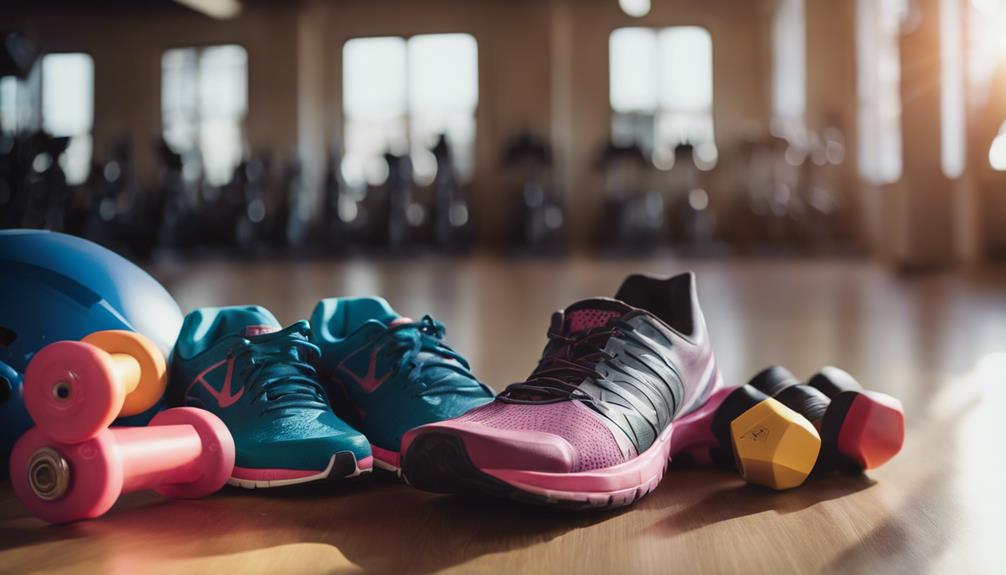
Starting an indoor sports facility can be an exciting venture, especially in a world where people are continually looking for ways to stay active, socialize, and have fun year-round. With a flexible environment that accommodates different sports and activities, you have the potential to create a thriving community hub. From basketball and soccer to ultimate frisbee and volleyball, the possibilities are endless. However, launching such a facility requires careful planning, creativity, and a good understanding of your market. Let’s dive into the essential steps to get your indoor sports facility off the ground!
1. Why Indoor Sports Facilities Are a Game-Changer
Indoor sports facilities are not just about providing a place to play; they offer year-round access to recreation, regardless of weather conditions. This flexibility allows communities to stay active, promoting health and wellness among all age groups. Moreover, these facilities often serve as crucial social hubs, where players and families can bond over shared activities, creating a sense of community. With the increasing popularity of both competitive and casual sports, indoor facilities have become essential for engaging local populations and fostering sportsmanship.
In addition to serving the community, indoor sports facilities can be lucrative businesses. With the right management, they can generate consistent revenue through memberships, hourly rentals, and various programs. They can also host tournaments and events, drawing in larger crowds and boosting local economies. In an era where wellness is a priority, investing in an indoor sports facility can truly be a game-changer, making it an attractive business opportunity.
2. Choosing the Right Location for Your Facility
Selecting the ideal location for your indoor sports facility is crucial to its success. You’ll want to find an area that is easily accessible and has adequate parking for visiting families and teams. Proximity to schools, communities, and residential areas can also enhance visibility and foot traffic. A good location can make all the difference in attracting participants and creating a loyal customer base.
Additionally, consider the competition in your chosen area. If there are already several sports facilities nearby, you’ll need to think about what you can offer that sets you apart. Perhaps it’s specialized programs, unique sports offerings, or exceptional customer service. The right location combined with a niche focus can help establish your facility as a go-to destination for indoor sports.
3. Understanding Your Target Audience and Sports
Before diving into construction and management, it’s essential to identify your target audience. Are you focusing on families, young adults, or perhaps a niche group like competitive athletes? Understanding who you want to attract will help you tailor your offerings, marketing strategies, and facility design. The more you know about your audience, the better you can cater to their needs and interests.
Equally important is deciding which sports you want to offer. Conduct market research to determine popular sports in your community and analyze trends. While traditional options like basketball and soccer are always in demand, consider incorporating emerging sports like pickleball or e-sports to widen your appeal. Offering a diverse range of activities can attract a broader audience and create a more inclusive environment.
4. Essential Equipment and Facilities You’ll Need
Once you have your target audience and sports in mind, it’s time to think about the equipment and facilities required to bring your vision to life. Standard indoor sports facilities typically need gymnasiums, courts, or turf fields, depending on the sports you choose to offer. Remember, investing in high-quality flooring and adequate lighting can make a significant difference in the player experience.
Besides sporting equipment, think about additional amenities that can enhance your facility. Consider features like locker rooms, showers, concession stands, and multipurpose rooms for classes or meetings. These extras can not only improve the experience for players but also create opportunities for additional revenue streams, such as rentals for parties or corporate events.
5. Crafting a Business Plan That Scores Big
Creating a solid business plan is the backbone of your indoor sports facility. Start by outlining your vision, mission, and goals. Then, include detailed financial projections, potential revenue sources, and a marketing strategy. Understanding your operational costs, such as staffing, utilities, maintenance, and insurance, will help you set realistic expectations for profitability.
Your business plan should also address potential challenges and risks. Consider factors such as seasonality in sports participation, competition, and economic downturns. By planning for these scenarios, you can devise strategies to mitigate risks and adapt to changes in the market. A well-thought-out business plan not only serves as a roadmap for your venture but can also be a vital tool for securing financing from investors or banks.
6. Navigating Permits and Legal Requirements Easily
Before opening your facility, you’ll need to navigate various permits and legal requirements. This involves zoning laws, building codes, and safety regulations. Check with your local government to understand what specific permits are necessary for operating an indoor sports facility in your area. This step is crucial to ensure that your facility meets all legal standards and avoids future headaches.
Additionally, don’t forget about insurance! Securing the right types of insurance—such as liability, property, and workers’ compensation—is essential for protecting your business and assets. Consulting with a legal professional or an insurance agent can help you understand your options and provide peace of mind as you embark on this journey.
7. Designing an Engaging and Functional Space
The design of your indoor sports facility should prioritize both functionality and engagement. When planning the layout, consider the flow of traffic, ensuring that players can easily navigate between areas while minimizing congestion. An open design can create a lively atmosphere, encouraging social interaction and participation.
Incorporating elements like spectator seating, viewing areas, and even interactive zones can enhance the overall experience for both players and visitors. Utilizing bright colors and motivating designs can also contribute to a vibrant environment that inspires athletes to give their best. Remember, a well-thought-out design isn’t just about aesthetics; it’s about creating a space that fosters excitement and enjoyment.
8. Marketing Your Indoor Sports Facility Like a Pro
Once you have everything in place, it’s time to get the word out! An effective marketing strategy is key to attracting your target audience. Utilize social media platforms and local community boards to promote your facility, highlighting unique features, programs, and upcoming events. Engaging content, such as videos showcasing activities or testimonials from satisfied customers, can help create buzz and generate interest.
Don’t underestimate the power of partnerships! Collaborate with local schools, sports clubs, and community organizations to promote your facility. Offering discounts for group bookings or running joint events can help build relationships and expand your reach. Ultimately, a proactive marketing approach can put your facility on the map and encourage participation.
9. Creating Fun Programs to Attract Players
To keep participants engaged and returning for more, consider developing a variety of programs that cater to different skill levels and interests. From leagues and tournaments to casual drop-in sessions and clinics, offering diverse options can attract a wider audience. Incorporating seasonal or themed events can also keep things fresh and exciting for players.
Don’t forget about youth programs! Kids’ clinics, birthday parties, and school holiday camps can draw in families and foster a love for sports. Engaging youth not only builds future players but can also lead to positive word-of-mouth promotion. By creating fun and inclusive programs, your facility can become a favorite destination for athletes of all ages.
10. Tips for Managing Your Facility Efficiently
Once your indoor sports facility is up and running, effective management becomes key to maintaining its success. Consider investing in management software that can streamline bookings, payments, and scheduling. This not only saves time but also improves the customer experience by minimizing confusion and ensuring smooth operations.
Furthermore, prioritize customer feedback and continual improvement. Regularly seeking input from players can help you identify areas for enhancement and keep your offerings relevant. Encourage a community vibe by hosting events, recognizing achievements, and celebrating milestones. By fostering a positive atmosphere and being responsive to your customers, you can ensure your facility thrives for years to come.
Starting an indoor sports facility is an exciting journey filled with opportunities to create a vibrant community space that promotes health, engagement, and fun. By following these steps—from understanding your target audience to marketing your offerings—you can set yourself up for success in this dynamic industry. Remember, the key is to remain adaptable and responsive to your community’s needs while continually fostering a welcoming environment for all. With passion and persistence, your indoor sports facility can become a local favorite and a thriving business.





